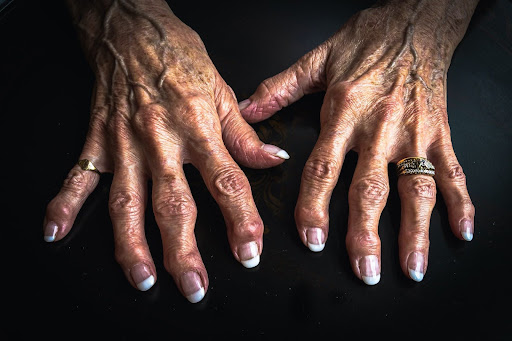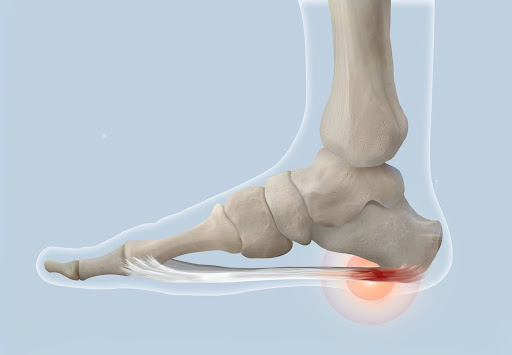
Radiation Treatment for Arthritis of the Hand
Arthritis, particularly osteoarthritis (OA) of the hand, can be debilitating, limiting movement and causing chronic pain. Among the various treatment options, low-dose radiation therapy (LDRT) is emerging as a viable alternative for those who have not found relief through standard medical treatments. While LDRT has been commonly used in Europe for decades, it is now experiencing renewed interest in the U.S. due to its potential to relieve pain and improve joint function. At Precision Cancer Care, while we treat many cancer patients with radiation therapy, we’re excited to offer LDRT for arthritis of the hand and other non-cancerous issues. If you suffer from this painful inflammation in the hand, you may be excited to learn that this treatment is available at our locations in Lawrence, Chanute, and Ottawa.
Radiation Treatment for Non-Cancerous Problems
Radiation therapy is typically associated with cancer treatment, but recently, it has been found to be helpful for non-cancerous problems as well. Radiation therapy, in very low doses (about 1/3rd to 1/5th of normal doses for tumors), can be very effective at targeting and killing cells responsible for the inflammation which can result in chronic arthritis and plantar fasciitis in the foot. Most healthy cells can repair themselves more effectively than cancer cells, which is why radiation therapy can selectively damage cancer tissue while sparing normal tissue. This results in very effective treatment because the feet and hands can tolerate high doses of radiation by comparison to the very low total dose required to treat arthritis effectively. Treatment is typically only 6-8 sessions which, in total is equal to approximately 1-2 standard doses of radiation.
How Low-Dose Radiation Therapy Works for Hand Arthritis
Low-dose radiation therapy is a non-invasive treatment that delivers small doses of radiation to the affected joints. Unlike the high doses used for cancer, the radiation here is mild, typically in the range of 3-6 Gy over several sessions. The therapy is thought to reduce inflammation in the joints, which is a key driver of pain and stiffness in arthritis. Although the exact mechanism is still being studied, LDRT appears to modulate inflammatory pathways, helping to alleviate symptoms without the side effects commonly associated with higher radiation doses (Cleveland Clinic) (Leading Edge Cancer Treatments).
Clinical Results Show LDRT Is Safe and Effective
Several clinical studies have investigated the impact of LDRT on hand osteoarthritis (HOA). In a study involving 100 patients treated between 2015 and 2021, the results were promising. These patients, suffering from various types of joint pain in the hand, underwent LDRT in six fractions of 0.5-1 Gy per session. The results showed a significant reduction in pain, with 94% of participants reporting an improvement, and functionality improvements were seen in 70% of the participants (PubMed). Moreover, LDRT was shown to be safe, with no acute or late complications reported during the study. This suggests that LDRT could be a practical solution for older adults with arthritis who may not tolerate other invasive treatments (PubMed).
Benefits of LDRT for Hand Arthritis
LDRT has several advantages that make it appealing to patients with hand arthritis:
- Non-invasive: LDRT involves no surgery or injections, making it a comfortable option for many patients.
- Minimal Side Effects: Due to the low dose of radiation used, patients typically experience no side effects.
- Long-lasting Relief: Pain relief from LDRT can last for months or even years, reducing the need for continuous medication.
- Repeatable: If symptoms return, LDRT can be repeated safely (Cleveland Clinic) (Leading Edge Cancer Treatments).
- The Future of Low-Dose Radiation Therapy for Hand Arthritis
As more studies confirm the benefits of LDRT, it is expected to gain wider acceptance, particularly for patients with refractory osteoarthritis who have exhausted other options. Refractory osteoarthritis is a type of osteoarthritis that doesn’t respond to standard treatments. It’s characterized by chronic pain and a high risk of joint destruction, even when patients use rest, assistive devices, and traditional pain medication.
Ongoing research will optimize radiation doses and treatment schedules to further improve outcomes. Despite some earlier studies that showed mixed results, the resurgence of LDRT in recent years highlights its potential as a low-risk, high-reward treatment for hand arthritis (Cleveland Clinic). For patients suffering from the chronic pain of hand arthritis, low-dose radiation therapy represents a promising alternative, offering pain relief, improved joint function, and a non-invasive solution that can enhance the quality of life.
For the latest in low-dose radiation therapy, call Precision Cancer Care at (785) 749-3600, or contact us online to schedule an appointment with one of our physicians. Precision Cancer Care – Precisely Where You Should Be.

